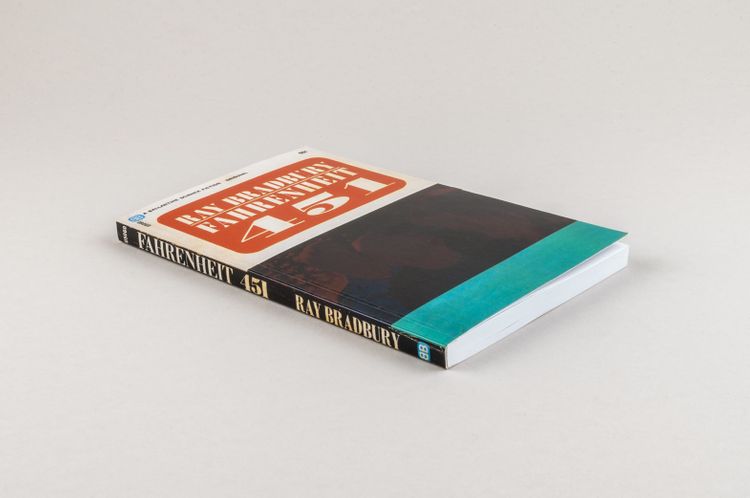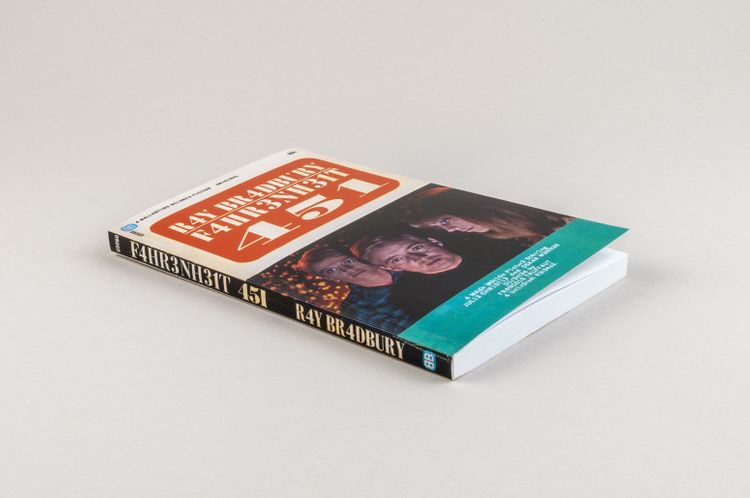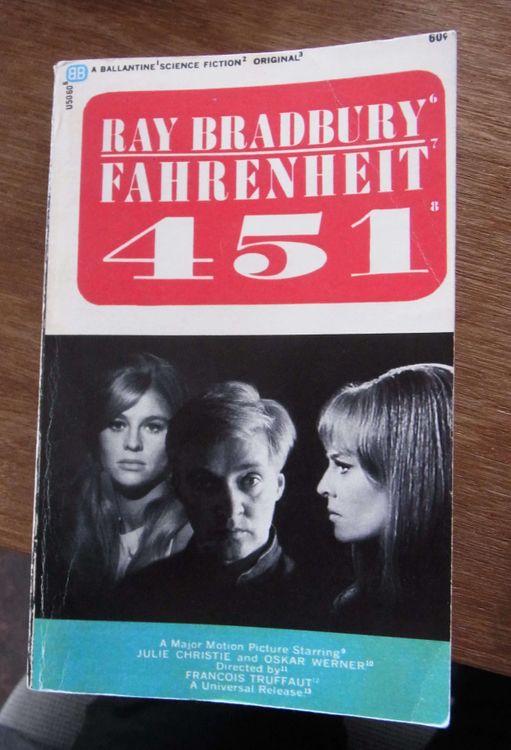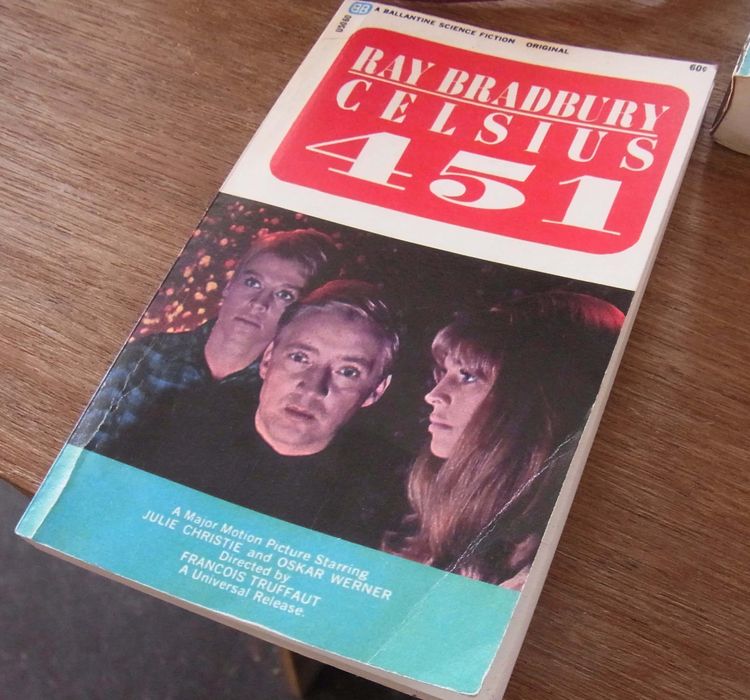Stéphanie Vilayphiou’s nine-part series Blind Carbon Copy “consists of experimental design hacks to reflect and circumvent intellectual property restrictions. Fahrenheit 451, a novel by Ray Bradbury, is presented via a web interface and also in print form (print on demand). Several filters offered to users are in place in order to reflect intellectual property restrictions or allowed practices, such as Fair Use. These filters offer a means to circumvent these restrictions by transforming the content. The reader can choose the filter through which s/he wants to ‘view’ the text, each filter being more or less legal” (Stéphanie Vilayphiou, “About”). The nine filters are divided into three categories:
• Circumvention (applied to “Black,” “PierreMenard,” “Size,” “Plagiarism,” and “L33T”),
• Conformance (applied to “Normal” and “Percentage”),
• Parody (applied to “Thesaurus” and “Translation”).
At the end of each book is an explanation of the project, a rationale for the selection of Bradbury’s novel, and a definition of the filter used. The paratexts (title and author name) of each book are also subjected to this filter. The copyright disclaimer on the project website reads “All wrongs reversed.”
While Vilayphiou calls her project “an art and design piece making Fair Use of copyrighted works in order to question the copyright system” (Stéphanie Vilayphiou, “Copyright Disclaimer”), Lulu and Amazon have blocked and deleted seven out of the nine books of the series due to alleged copyright violations—without anyone taking legal action and without the existence of any court decision. Only the “Normal” and the “L33T” editions were still available (as of March 2022). The book series was created as part of a Master project for the Piet Zwart Institute. The ISBNs given can only be found on the artist’s website, but not on the books themselves (see Vilayphiou, “BCC: Blind Carbon Copy”).
Filter category: conformance
“Displays the text according to its copyright. As Fahrenheit 451’s copyright belongs to Ray Bradbury (1953) and the cover photo copyright goes to Philippe Halsman (1966)” (Vilayphiou, “BCC: Blind Carbon Copy”), Vilayphiou’s book shows only blank pages except for the column titles and pagination.

Filter category: circumvention
“Translates the text into leet or l33t alphabet, replacing letters of the regular latin alphabet by resembling ASCII characters. The text remains—somehow—readable, but its essence, its bits are completely different” (Vilayphiou, “BCC: Blind Carbon Copy”).
Sample: “1t w4s 4 sp3c14l pl34sur3 t0 s33 th1ngs 34t3n, t0 s33 th1ngs bl4ck3n3d 4nd ch4ng3d.”

Filter category: circumvention
“Based on novelist Jorge Luis Borges’s essay ‘Pierre Ménard, Author of the Quixote.’ Borges invented this fictive author who re-wrote entirely word by word Don Quixote in the beginning of the 20th century. Borges states that Ménard’s version was completely different from the one from Cervantes because the author is a different person, has a different background, environment, education and because it is written at a completely different time. Therefore this filter replaces the author’s name by Pierre Ménard as if the text were re-written by this famous author” (Vilayphiou, “BCC: Blind Carbon Copy”).
Sample: “It was a special pleasure to see things eaten, to see things blackened and changed.”

Filter category: Circumvention
“Displays the text in an illegible way, whether with a tiny or a huge font size. Is it the reproduced content that matters or its accessibility? Is the tiny book as reprehensible as the one in Truffaut’s Fahrenheit 451 adaptation?” (Vilayphiou, “BCC: Blind Carbon Copy”)
On the project website you can find a sample text where the text is oversized. In the printed book, the text is extremely small.
Filter category: circumvention
“Each sentence of the text comes from another website, therefore the text becomes a collection of quotations. The text is parsed into sentences which are linked to the first Google Books search result” by use of footnotes. The principle is already applied to the cover; the corresponding footnotes can be found on the back cover. “According to novelist Raymond Federman, in his essay Imagination as Plagiarism, no text is new, it’s always a plagiarism” (Vilayphiou, “BCC: Blind Car- bon Copy”).
The project website contains a sample text in which the footnotes of the printed text are implemented as hyperlinks that lead directly to the quoted passages from books on Google Books.

Filter category: circumvention
“Makes the text unreadable, but its bits remain the same, but one can still access the text by copy/paste it or via the source code” (Vilayphiou, “BCC: Blind Carbon Copy”). Of course, this only applies to the website, not to the printed version.
Filter category: conformance
“Similar to Google Books system, randomly displays one third of the total paragraphs of the text, reflecting American Fair Use, the right to quote a work. But the ratio one is allowed to reproduce cannot be quantified by the Law” (Vilayphiou, “BCC: Blind Carbon Copy”).
Filter category: Parody
“Replaces the most rare word of each clause by its more frequent synonym” (Vilayphiou, “BCC: Blind Carbon Copy”).
Sample: “It was a special pleasure to see things eat up, to see things melanize and changed.”

Filter category: parody
“Automatically translates the text first to a foreign language and then back to its original language. Here, from English to Dutch back to English” (Vilayphiou, “BCC: Blind Carbon Copy”).
Sample: “It was a particular pleasure to see things eaten, to see things black and changed.”
